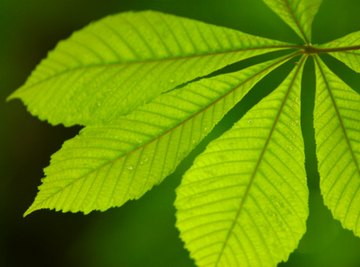
Macro elements and micro elements are both needed by plants to grow and thrive, but they are required in different amounts. There are sixteen essential nutrients for plants, and these are divided into categories depending on the amounts plants need of each.
The difference between micro and macro minerals, also called elements or nutrients, is the quantity of each needed by various plant species. Micro means extremely small, so micro elements are needed in very small doses. The meaning of the word macro is very large; thus, plants require macro elements in large amounts.
Essential Macro Elements
The elements that plants need in large amounts are also called primary nutrients. These macro elements are found naturally occurring in the soil, but they can be depleted by plants growing in the same place year after year. Testing soils for both macro and micro elements and adding nutrients when needed is important for any home gardener or farmer.
The macro elements needed by plants and their functions include nitrogen for cell formation, phosphorous for carbohydrate metabolism and potassium for developing reproductive structures. The chemical symbols for these three macro nutrients – nitrogen, phosphorous and potassium – are N, P and K, and the ratio of these elements is often provided on the labels of fertilizer products.
Other macro elements include carbon, hydrogen, oxygen, calcium, magnesium and sulfur. Generally speaking, macro elements are found in plants in concentrations of at least one milligram, or 1,000 micrograms, per gram of dry matter, and they are not toxic to plants when they are provided in excessive amounts.
Essential Micro Elements
Micro elements are also called trace nutrients, and they are are needed by plants in very small quantities. In contrast to macro elements, micro elements can be toxic to plants when they are provided in excessive amounts. As a rule of thumb, micro elements measure less than or equal to 0.1 milligram per gram of dry matter in plants.
Some of the main micro nutrients needed for growing healthy plants are boron, chlorine, copper, iron, manganese, molybdenum and zinc. Some plant species also require cobalt, nickel, silicon, sodium and vanadium in trace amounts.
Most of the micro nutrients are essential for proper enzyme activity in growing plants. Molybdenum is also involved in nitrogen fixation in legumes, and chlorine is needed for chlorophyll formation. Manganese is essential for plant pigmentation, which is important to the process of photosynthesis.
Nutrients in Soils
While both macro and micro nutrients are needed by plants to germinate, grow and reproduce, they are required in different quantities by different species. Plants are not negatively affected by excessive amounts of macro nutrients like carbon, hydrogen and oxygen, but too much of micro nutrients like boron, chlorine or copper can stunt or even kill some plants.
Testing soils is especially important for commercial growers, and even more important if they are growing the same crop in the same location for many years in a row. Heavy feeders like corn can deplete the soil of nitrogen, which is why it is good practice to rotate crops and follow corn with a legume like beans or clover in order to return nitrogen to the earth for the next crop.
The fact that plants draw nutrients from the soil can be used to help clean the soil of toxins like heavy metals. At sites that have been polluted with excessive concentrations of elements like zinc or copper, fast-growing species such as sunflower, mustard and willow can help clean the soil by concentrating the pollutants in their biomass, a process called phytoremediation. While many plant species can't tolerate excessive amounts of toxins, scientists have found that other species can thrive on polluted soils and help us restore the health of the planet.
References
About the Author
Meg Schader is a freelance writer and copyeditor. She holds a Bachelor of Science in agriculture from Cornell University and a Master of Professional Studies in environmental studies from SUNY College of Environmental Science and Forestry. Along with freelancing, she also runs a small farm with her family in Central New York.
Photo Credits
Hemera Technologies/AbleStock.com/Getty Images
